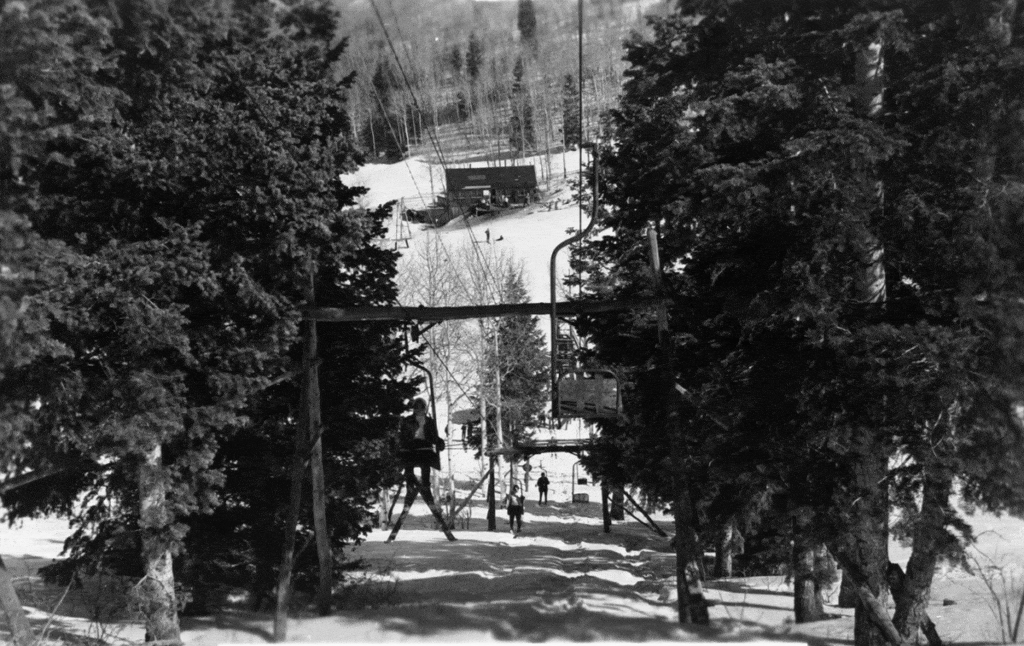In 1982, Edgar Stern opened Deer Valley. He insisted that the area’s history and mining heritage be memorialized in the names of runs and significant structures. Although a few have since been changed, here are some stories about how they came to be:
Snow Park was the local ski club. The name was borrowed by Otto Carpenter and Bob Burns in 1947 when they started their ski area at the base of the mountain, the first commercial ski area in Park City. The men are memorialized in Burns Lift andCarpenter Lift.

Credit: Park City Historical Society and Museum, Bea Kummer Collection
In early days, there’d been a horseracing track, a “pest house” quarantining those with infectious diseases, a meat processing business, a cemetery and the massive Judge Zinc Smelter at the current intersection of Deer Valley Drive and Royal Street. A railroad circled the valley, picking up ore at the Smelter and Park Con Mine, now St. Regis and Deer Crest. The road along the tracks was known as “the line” where Rachel “Mother” Urban employed her “soiled doves” in a row of 16 little houses. Pretty seedy past for a place that revolutionized customer service and elegance in skiing!
The first settlement in Park City was Lake Flat, now known as Silver Lake. The Chateaux sits atop the site. The lake disappeared when former Pony Express rider Jack Keetleydug a tunnel to drain the Ontario Mine.
George Hearst arrived in 1872 and bought the Ontario claims, which became one of our most productive mines. Homestake was what he named his mine in Lead, South Dakota when his wife Phoebe declared she’d had enough gambles and wanted one mine she could count on for secure investment. Homestake, Ontario, and other profitable ventures funded the newspaper publishing empire of their son, William Randolph Hearst.
Open territory also attracted many like John Daly, who wandered the mine camps of the West. He became a prominent Park City miner and banker with ownership in the Daly, Daly Judge and Daly West mines. His name is lent to Daly Bowl and Daly Chutes.
Several accounts posit that soldiers from Ft. Douglas crossed the divide from Alta and found an outcropping of ore which they marked with a flag in order to find it after winter. The Flagstaff Mine sits high above Guardsman Pass Road and is the earliest recorded claim in the area. Though it was probably not the earliest discovery, it was the first to ship out ore.
American Flag was a profitable mine in Empire Canyon, below the Montage Hotel. In May 1969, soggy soil of the workings caved and created a dam, holding back snowmelt in a lake. The dam eventually breached, flooding Old Town.
Other names coming from mine claims are Blue Ledge, Fairview, Grizzly, Lady Morgan, McHenry, Nabob, Pearl, Quincy, Ruins of Pompeii, Square Deal, Thunderer, and Wizard.
Though Edgar Stern insisted that run and lift names reflect history, he also agreed to honor Stein Eriksen with Stein’s Way. Edgar’s Alley was christened after Stern died.